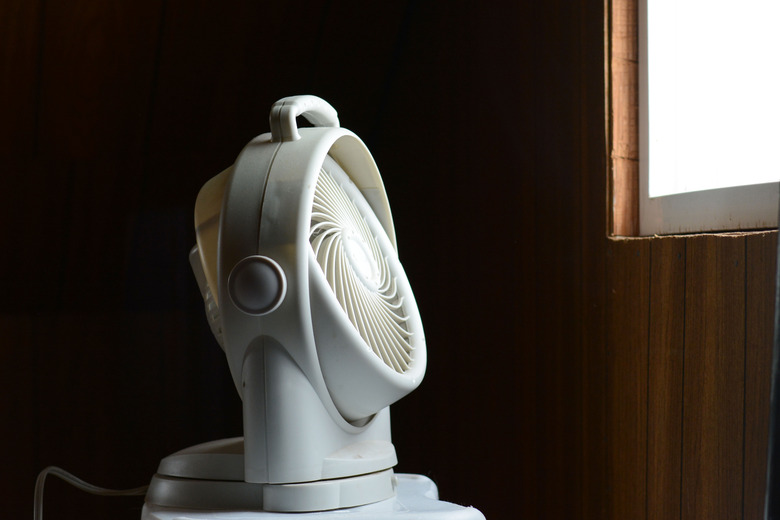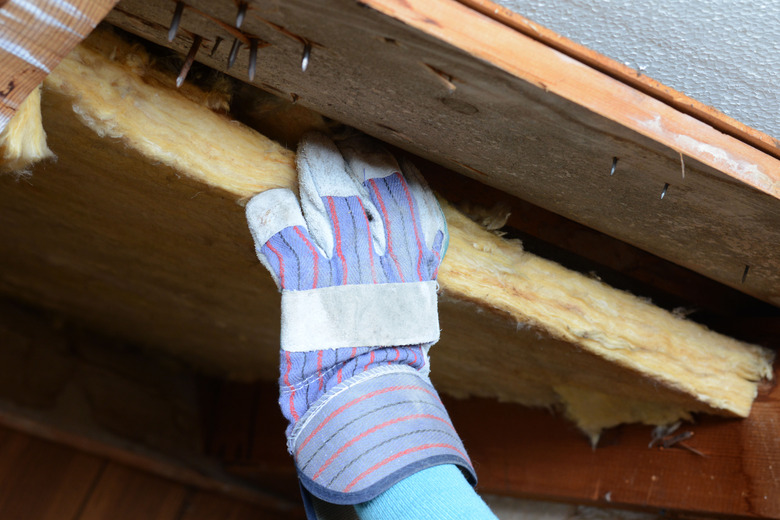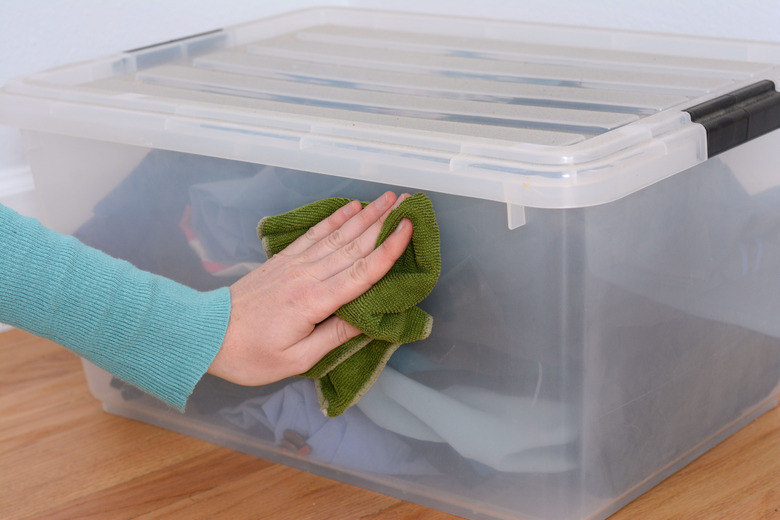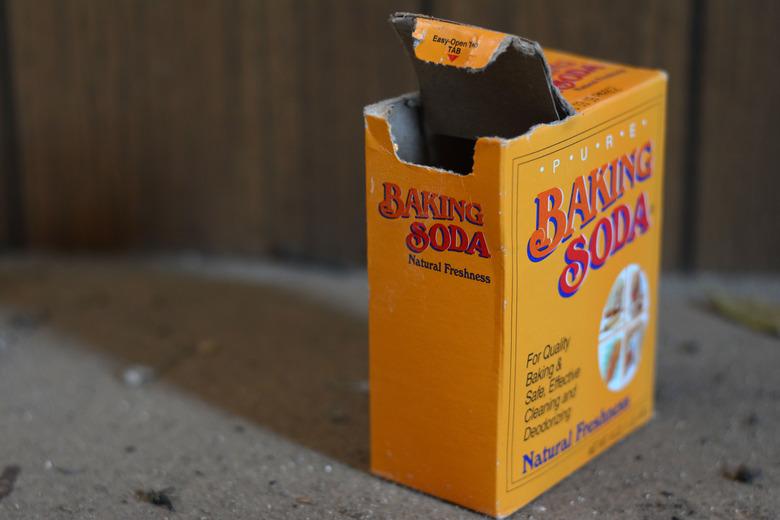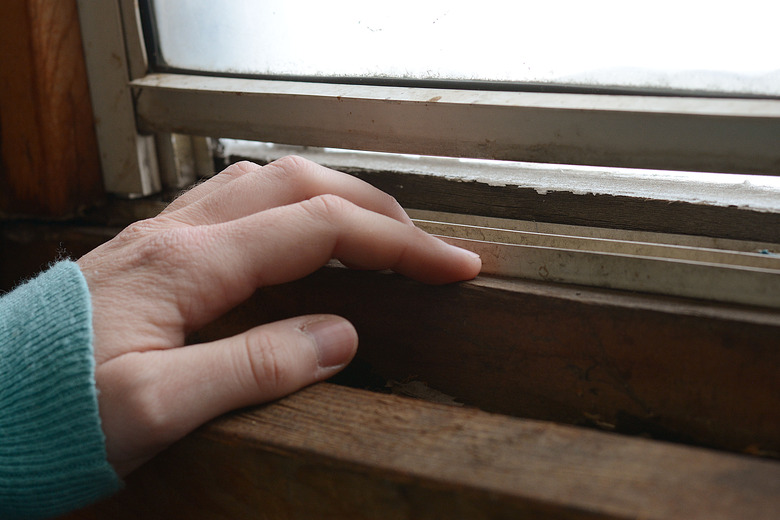How To Remove Odors In An Attic
Things Needed
-
Large box fan or window fan
-
Air freshener
-
Flashlight
-
Trash bag
-
Long-sleeved shirt
-
Work gloves
-
Dust mask
-
Insulation
-
Rubber gloves
-
Shovel
-
Spray bottle
-
White vinegar
-
Cloth or sponge
-
Boxes of baking soda
-
Dehumidifier
Tip
Keep the stored items in your attic tidy by using large plastic totes with lids to prevent moisture and animal damage. This also makes it easier to find items when you're looking for them.
Warning
Black mold can be very harmful and spores can be released through moving the object or disturbing the air around the mold. This type of mold looks black and thick and is a slow-growing mold, but it may be difficult for the untrained eye to note the difference between black mold and a less harmful mold variety. Contact a professional mold inspector or mold-removal company if you suspect attic mold is black mold.
If insulation, wood, ceiling or walls in the attic appear wet, there may be a leak on the roof. Call a roofing contractor to find the source of the problem.
Musty, dirty, animal and moldy smells in an attic create an unpleasant surprise when you go up to this easily overlooked space in the house. Such odors may even make the items or clothing you're storing in your attic smell as well. To keep the smell from getting any worse, you'll want to remove odors in an attic as soon as possible by trying a few methods to clear the air and eliminating the root of the problem. Since the attic is typically a forgotten, closed-up space in the home, giving it a fresh-air treatment from time to time helps remove or prevent stale odors.
Step 1
Open the windows of the attic, if possible, to vent the air trapped in the attic out and allow fresh air to come in. Run a large fan in the window facing out to draw air from the attic. Spray an air freshener in the room, if needed, to make the attic a tolerable space to work in.
Step 2
Use a flashlight to look over the attic for the source of the smell. If there is moisture damage or the appearance of mildew on any exposed insulation, then pull the damaged insulation down and stuff it into garbage bags. Wear a long-sleeved shirt, heavy work gloves and a dust mask if dealing with fiberglass insulation to avoid getting the substance on you skin or breathing in fine particles. Replace the old insulation with new insulation as soon as possible.
Step 3
Search for dead animals if the smell is indicative of that kind of problem. Use rubber gloves or a shovel to remove any carcass found and dispose of it in a trash bag. Contact your local waste authority for the proper disposal method of the animal. If an animal carcass is the reason for the odor, leave a bowl of vinegar in the attic overnight to help remove the foul odor.
Step 4
Look over any boxes for signs of moisture or mildew. Discard cardboard boxes and any items contained in them that have evidence of moisture damage that could potentially grow mold. Spray the outsides of plastic containers with vinegar and wipe away any mildew with a cloth or sponge.
Step 5
Open three to four boxes of baking soda and leave them in different areas of the attic to absorb any odors that remain after clearing away obvious culprits, such as wet insulation or damaged boxes. Change the boxes every three months.
Step 6
Look for leaks around any windows or along areas of the roof if you are noticing significant moisture damage. Fixing the leaks as soon as possible should prevent future odors from occurring. Invest in a dehumidifier to clear away excess moisture and humidity from the attic on a continual basis if you do not find leaks.

